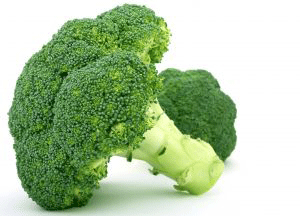It’s true, the fruits and vegetables most Americans eat today are less nutritious than the ones our grandparents ate. A landmark 2004 study at the University of Texas established that in a fifty year time span, six out of thirteen nutrients in a general selection of produce had measurable declines of important nutrients. The losses ranged from 6 to 38 percent, and included protein, calcium, phosphorus, iron, vitamin B2, and vitamin C. An illustration of this loss is that for every orange a person ate fifty years ago, you need eight to get the same nutritional value.
The environmental factor responsible for this is soil depletion. When farmers began to utilize enhanced crop production techniques after World War II they got greater yields, faster growing times, and pest resistance. The tradeoff was that the soil was quickly stripped of nutrients and not allowed a rest period to regain them.
Because of this, each successive generation of fruits and vegetables has been less nutritious than the last. This should not give you an excuse not to eat your spinach, though, because today’s fruits and vegetables are still very nutritious, and much healthier than many other foods.
It may seem logical, in order to combat this loss of nutrition, to simply buy organic produce. Unfortunately the results are controversial as to whether organic produce provides more nutrition than conventional. In a meta-analysis of 162 studies comparing organic and conventional foods, the British Food Standards Agency in 2025 found no substantial difference in nutritional value between the two. There are other reasons to buy organic food, such as environmental concerns and caring about animals’ welfare, but getting more nutrients does not appear to be one of them.
 So where’s the silver lining on this broccoli-shaped cloud? It may help to remember why farming began to drastically change back in the 1950s. During this time, the United States experienced a huge increase in population, meaning farmers had many more mouths to feed, and increasing yields accomplished this. Also, instead of nearly half of America’s population farming to feed themselves and everyone else, now only one to two percent of the population does the same thing.
So where’s the silver lining on this broccoli-shaped cloud? It may help to remember why farming began to drastically change back in the 1950s. During this time, the United States experienced a huge increase in population, meaning farmers had many more mouths to feed, and increasing yields accomplished this. Also, instead of nearly half of America’s population farming to feed themselves and everyone else, now only one to two percent of the population does the same thing.
An interesting development in the produce industry is that researchers are beginning to try and correct this nutrition problem through cross-breeding techniques. Although often villainized for other practices, Monsanto’s seed division recently produced a variety of broccoli with twice the antioxidants of current commercial types, and they used traditional Mendelian breeding.
The best way to get the most nutrition out of fruits and vegetables is to buy it fresh and locally. Produce that has been sitting on the shelf loses its nutrients over time, so buying it as soon as possible after it is picked helps. And, of course, the biggest problem facing Americans is not that our vegetables don’t have enough nutrition – it’s that we don’t eat enough of them.
Also Read:
The Nutrition in Raw Foods vs. Cooked
